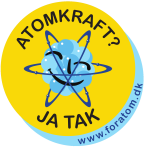Where does the water come from?

After the accident in March 2011 at the Fukushima Daiichi nuclear power plant, water was necessary to cool the melted fuel and waste. After contact, the water becomes contaminated.
The contaminated water undergoes filtration via the Advanced Liquid Processing System (ALPS) method, which combines pumps and filters with chemical reactions and separates all other elements from the contaminated water before it is stored.
Despite this, the ALPS method cannot wholly separate one element, tritium, from the water.
Technically, it is very complex to remove tritium-containing water from ordinary water due to its similarities. Existing technologies used to separate high-concentration tritium are not suitable for the low-concentration tritium found in the water at the Fukushima Daiichi nuclear power plant.
It is this tritium that creates much fuss. But what is it?
What is Tritium?

Tritium is a mildly radioactive isotope of hydrogen [1]. It forms naturally in the atmosphere when cosmic rays collide with air molecules. Therefore, tritium is already found in far greater natural concentrations than in the water left over from Fukushima. It also occurs naturally in very small or trace amounts in groundwater worldwide [2].
Does it pose a risk?
The short answer is no. Tritiated water has a biological half-life of approx. Ten days in the human body. It emits weak beta particles, which can penetrate about 6.0 mm of air but not into the body through human skin unless ingested in enormous quantities.
Ultimately, getting a significant radiation dose from tritium is impossible, unlike any other radionuclide. It leaves the body and is diluted too quickly. No adverse health effects have been observed in humans due to ingested tritium [3].
The biological half-life of tritium in fish and marine life is even shorter than in humans, less than two days. Tritium’s physical and chemical properties mean that it does not concentrate up the food chain – but instead dilutes up it too quickly for any significant dose to get back to any people.
The world’s oceans are naturally many times more radioactive.
The total amount remaining in the wastewater corresponds to the natural amount of tritium created naturally in the Pacific Ocean by the sun’s irradiation of the seawater in 3 days.
So the fish are already swimming in lots of natural radioactivity, more than the Fukushima water could ever provide.
It poses no risk to people or the environment.
Short term solution

The tritium-containing water from the Fukushima Daiichi plant has since been safely stored in tanks on the site, and the current tank site is reaching total capacity. Therefore, TEPCO decided that a long-term disposal solution is needed.
Controlled discharge into the sea
In April 2021, the Japanese government issued a basic policy to dispose of ALPS-treated water through controlled discharge into the sea [4]. It is performed under International Atomic Energy Agency (IAEA) safety standards and requirements [5].
The IAEA reviews the management of the ALPS-treated water at Fukushima Daiichi by conducting independent monitoring and sampling to ensure compliance with IAEA safety standards. The review will continue for many years with ongoing monitoring activities.
That’s the best way to handle
Sources:
- http://hps.org/documents/tritium_fact_sheet.pdf
- https://www.nrc.gov/reading-rm/doc-collections/fact-sheets/tritium-radiation-fs.html
- Wanigaratne et al. 2013 https://pubmed.ncbi.nlm.nih.gov/23987221/
- https://www.meti.go.jp/english/earthquake/nuclear/decommissioning/pdf/202104_bp_breifing.pdf
- https://www-pub.iaea.org/MTCD/publications/PDF/PUB1818_web.pdf




